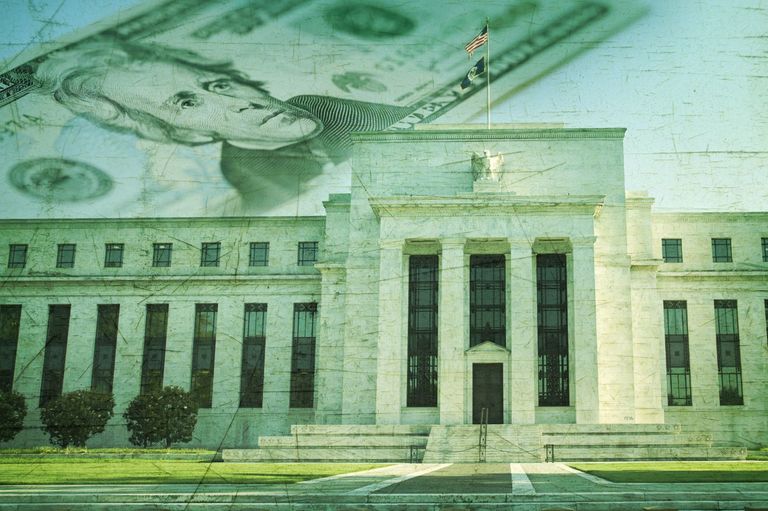Even though European markets closed broadly lower on Friday, we still managed to see the third positive weekly gain in a row, in the face of rising yields on both sides of the Atlantic.
US markets also saw a strong end to the week, recording their best weekly gains since June, despite yields which have risen back to levels last seen prior to the financial crisis. Both the 2-year and 10-year yield pushed up to their highest levels in over 15 years, before slipping back sharply off their highs of the day.
One of the main reasons for the late retreat in yields across the board on Friday, particularly in the short end, appears to have been a report on speculation that a November rate rise of 75bps might prompt a pause, or a slowdown in the pace of the Federal Reserve’s rate-hiking cycle, from December.
The sharp retreat in 2-year yields appears to have been prompted by a story in the WSJ, that suggested just such a scenario. While this may well have a very short shelf life, it nonetheless provided a decent end of week uplift, as we head towards the quiet period ahead of the next Fed meeting in the middle of next week.
The timing is also curious given recent comments from the likes of more dovish members like Neel Kashkari of the Minneapolis Fed, who as recently as last Thursday was saying that the Fed was in no position to pause on rate rises if inflation was still rising, even with the Fed Funds rate at 4.5%. If some Fed officials are becoming uneasy with the current pace of rate increases and are starting to worry about over-tightening, then they are disguising it well, because apart from Fed vice-chair Lael Brainard, there’s been little evidence of it thus far.
It’s also worth keeping an eye on the latest flash PMIs for October, which are expected to continue to paint a dire economic outlook for the French, German, and UK economies. France, Germany and UK manufacturing and services PMI numbers are forecast to show further deterioration, and a steeper slide into contraction territory on all measures, as higher energy prices and deteriorating consumer confidence take a further bite out of economic activity. Further sharp weakness in these numbers will only serve to make this week’s ECB meeting much more challenging, as policymakers meet to agree to another 75bps rate rise.
Despite all the turmoil around UK politics last week, the pound ended up finishing the week higher for the third week in a row against the US dollar, while gilt yields closed lower. It was set up to be another key week for the pound, with the prospect of another Conservative party leadership contest, however the unexpected decision of Boris Johnson not to declare his candidacy for the contest appears to have simplified the outcome, given the number of MPs who have already declared their support for Rishi Sunak.
With the only other challenger being Penny Mordaunt lagging behind, it's quite likely that Rishi Sunak could well be elected unopposed and be prime minister by the end of the day. This also means that the prospect of a delay to the 31 October budget has receded, with all eyes set to be on UK gilt markets this morning, after the late yield surge at the end of last week, over concerns there might be a delay.
The recent political turmoil in the UK also prompted Moody’s rating agency to downgrade their outlook for the economy to negative from stable on Friday. The report said that there were also risks to the UK’s debt affordability from likely higher borrowing and risk of sustained weakening in policy credibility. There was a time when this might have mattered pre-2008, however given the current economic and political challenges facing not just the UK, but the whole of Europe, the downgrade is unlikely to have a lasting effect.
The Japanese yen also underwent a big surge on Friday, on suspected intervention after the currency slipped to a new 32-year low against the US dollar of 151.94. The intervention saw the US dollar slide back sharply to close at 147.70, finishing the week lower for the first time since early August. We appear to have seen further bouts of intervention this morning after the Japanese yen looked to retest the 150.00 area.
The big question now is whether this marks a new aggressive posture from Japanese monetary authorities in response to a yen slide that is entirely self-inflicted by the Bank of Japan, and its current monetary policy of yield curve control and easy money. Friday’s move lower in the US dollar was also exacerbated by the WSJ story of a possible Fed pause, which if it comes is likely to be much more effective than anything the Bank of Japan might do.
The only way the Bank of Japan can help put a floor under the yen is if we have any indication of a pivot on its current policy settings later this week, and while this morning’s talk of further intervention has seen the US dollar dip back, it’s unlikely to change the wider direction.
EUR/USD – found support at the 0.9700 level on Friday, which also happens to be trendline support from the recent lows. In the longer term we are still below the 50-day SMA and trend line resistance from the highs earlier this year, which currently come in at the 0.9900 area. The bias remains for further losses towards 0.9000, while below 1.0000.
GBP/USD – continues to chop wildly, rallying from 1.1060 on Friday, but needs to take out the 1.1440 area and the 50-day SMA to stabilise. A move below 1.0920 opens up a return to the 1.0800 area.
EUR/GBP – ran into resistance at the 0.8780 area last week. Still have support back at the 0.8570 level and 100-day SMA. A break of 0.8650 and the 50-day SMA, could well signal further declines towards 0.8490 and the 200-day SMA.
USD/JPY – pushed up to new 32-year highs of 151.94 before reported intervention pushed the US dollar lower, rebounding from the 146.15 area, before slipping back to 145.50 this morning. Could struggle to move back above the 150.00 area in the short term but remain in buy the dip mode.
Disclaimer: CMC Markets is an execution-only service provider. The material (whether or not it states any opinions) is for general information purposes only, and does not take into account your personal circumstances or objectives. Nothing in this material is (or should be considered to be) financial, investment or other advice on which reliance should be placed. No opinion given in the material constitutes a recommendation by CMC Markets or the author that any particular investment, security, transaction or investment strategy is suitable for any specific person. The material has not been prepared in accordance with legal requirements designed to promote the independence of investment research. Although we are not specifically prevented from dealing before providing this material, we do not seek to take advantage of the material prior to its dissemination.







